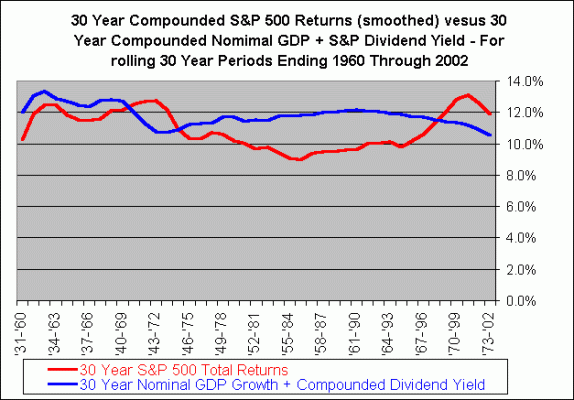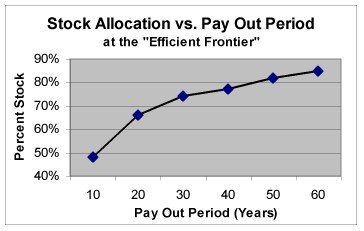Yes. That is the rate that would have been safe in the worst we have ever seen, so the 4% number, or $40,000, adjusted each year for inflation, is the commonly discussed safe withdrawal amount. That's what we mean by "safe".
Bonuses or raises? Now, there is another factor that doesn't get discussed all that much in calculations, although it probably gets implemented all the time when we use common sense in deciding how much to spend during our retirement. Let me try to give a logical description.
We are saying that 4% of the starting balance is safe, meaning that starting from any arbitrary point in time, we can initiate a series of ~30 annual withdrawals of 4% of the portfolio balance at that point in time, with adjustments for inflation.
We usually talk about this in the situation when the portfolio goes way down -- and the whole purpose of the safe rate discussions is to give us some comfort that if we stop our paychecks early, we can reasonably count on at least 4% of the balance at that point for the next ~30 years.
But look at the positive side. Let's say that in 5 years, the portfolio is at 1.2 million, after starting at 1 million. (Assume these are all inflation-adjusted dollars for this discussion.)
What has happened?
One thing that has happened is that we have "lucked out", as the scenario that is worst for the survival of a portfolio is a large and lengthy market decline starting immediately after we decide to begin the withdrawals. Except for that scenario, the rate would be a good bit higher.
Another thing that has happened is passage of time. So now, instead of needing a $1 million portfolio to last for 30 years, we need it to last for only 25 years.
We can take advantage of our good fortune (timing retirement when we don't have an immediate bear market afterwards) and our new circumstances (more money and a shorter time to spend it) in a couple of different ways.
One -- we can start over. Just designate this new moment as the start of the withdrawal program, and take 4% of 1.2 million, or $48,000 instead of $40,000, for the next 30 years (or you could take ~4.2%, since you are now looking at 25 years instead of 30...), or,
Two -- we can take a $200,000 "bonus" to get the portfolio back down to $1 million, and continue drawing 40,000 for 30 years (or 42,000 for 25 years).
(This seems counterintuitive, but all that is happening is that we are reducing the amount that would have been left over at the end of the 30 year period, since we didn't get the bear market in the first 5 years.)
So... 4% sets your minimum withdrawal even in bad times, but you can adjust upwards following good years.
Hope this helps -- dory36



